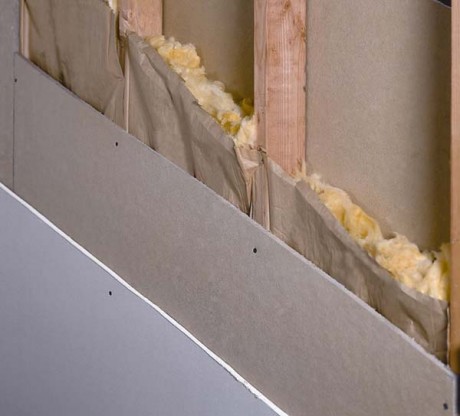Try This!
Soundproofing your rooms
By James Dulley
Homeowners sometimes ask about adding insulation to make their rooms quieter and more efficient. Adding wall insulation can be expensive and above the skill level of most do-it-yourselfers. In many older houses, particularly ones with masonry walls, there is little space inside the walls for additional insulation. In many cases, it's worthwhile to spend more on insulation with the highest R-value per inch, which is a number showing the ability of insulation to resist the transfer of heat. Higher R-values indicate more effective insulation.
Any type of insulation you add to save energy will help somewhat to soundproof the walls, but you need additional improvements for significant noise dampening because sound travels mostly through the wall studs.
In the case of a new room addition, carefully installing fiberglass batt insulation will boost energy efficiency. The key word is "carefully" because fiberglass batts don't provide protection from gaps at the wall joists — spaces must be caulked or spray-foamed before insulating. Every crack and gap reduces the overall efficiency of the new wall.
It's difficult to eliminate all the air gaps in your existing walls, but having foam insulation injected is effective because it fills in spaces to eliminate air leakage.
Another option is to build a second insulated wall against the inside existing wall. You'll lose only about four inches of floor space for the new wall, which you can frame with 2-by-4-foot pieces of lumber, insulate with foil- or kraft paper-faced fiberglass batts, and then cover with drywall. This method is particularly effective for older houses with full masonry walls.
If your windows are old, installing new ones can save energy and block noise. But simply caulking and weather stripping your old windows can have a dramatic effect on reducing noise and improves energy efficiency.
When planning a new room, research STC (sound transmission class) ratings for various types of wall construction. A typical uninsulated interior wall with drywall on each side of 2-by-4 framing has an STC of about 34.
If there are common heating ducts and holes for electrical outlets and phone jacks, the STC of that interior wall may be only 25. Using an inexpensive outlet insulation kit is one more way to improve energy efficiency for this scenario. Adding insulation inside the wall increases the STC by very little — normal conversation would still be easily heard. At the other extreme, with an STC of 66, yelling is barely audible in adjacent rooms.
Another consideration is the type of noise you want to block. If it's normal household sounds and voices, many standard soundproofing methods are effective. If you want to block deep bass vibrations from music or a home theater, a thicker wall is best. You can create that by installing two layers of drywall or using a high-density wallboard. If using drywall you can nail them tightly together or leave them slightly separated for the benefits of decoupling, which helps to block sound transmission.
-
Share this story:


